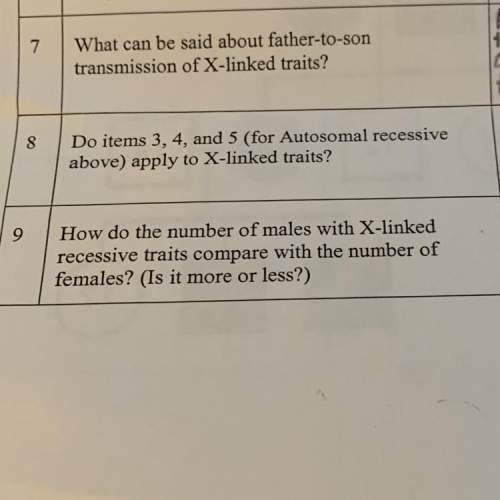
Biology, 25.11.2020 02:30, tylerjoshonti
Section I: Experimental Overview
Use your answers from questions 1–3 as the basis for the first section of your lab report. This section provides your reader with background information about why you conducted this experiment and how it was completed. Outline the steps of the procedure in full sentences. It also provides potential answers (your hypothesis/es) relative to what you expected the experiment to demonstrate. This section should be 1–3 paragraphs in length.
Section II: Data and Observations
Use your answers from questions 4–5 as the basis for the second section of your lab report. This section provides your reader with the data from the experiment, in a summarized and concise way. No paragraphs are required for this section, but you do need to include the key data and observations from which you will generate your analysis and discussion. This section is objective.
Section III: Analysis and Discussion
Use your answers from questions 6–8 as the basis for the third section of your lab report. This section provides your reader with your interpretation of the data set. You will also give an example of any calculations or formulas you used to analyze your data. Also, you will want to include any graphs that you made and interpret them for the reader.
If you did construct graphs, your Student Guide included information on which graphs to construct. Graphs should have the following:
a. Appropriate titles
b. Appropriate labels for each axis
c. Appropriate scales for each axis
d. Correct units for the data
Complete a rough sketch of each graph. Explain in one or two sentences what trend the reader should observe in each of your graphs.
Mention any problems, unusual or unexpected data, or other factors with the experiment here, and suggest possible causes. This section can be somewhat subjective, unlike Section II, because you are free to include your personal interpretations or even speculation if it adds constructive, reasonable insight to the discussion.
This section is variable in length, and should likely be the longest part of your report.
Section IV: Conclusions
Use your answers from questions 9-11 as the basis for the fourth section of your lab report. In this section you will summarize the outcome of the experiment, and discuss how the original hypothesis(es) was (were) either supported or refuted. Use logic and reason in explaining your statements, and be sure to refer to specific data from your experiment that supports your argument.
This section also demonstrates your understanding of the experiment, through your ability to offer constructive criticism about its design and make suggestions for future experimentation. There are always ways that experiments can be improved. Now that you are a veteran of this experiment and have experience with the procedure, offer some advice to the next scientist about what you suggest and why.
This section should be 1–2 paragraphs long.
Overall
When complete, the lab report should be read as a coherent whole. Make sure that you connect different pieces with relevant transitions. Review for proper grammar, spelling, punctuation, formatting, and other conventions of organization and good writing.

Answers: 1
Other questions on the subject: Biology

Biology, 21.06.2019 17:30, imbadatmath56
What claim did thorne make? what evidence supported his claim?
Answers: 3

Biology, 22.06.2019 04:00, hannahe83
As studied this week in the cell cycle, we saw how a cell moves through its life with a plan. as you transition from a student at uma to a valued member of your chosen career field, what will you put into place in your life to manage and to fit the new responsibilities of your career into your current life?
Answers: 2


Biology, 22.06.2019 18:30, ellamai16
On a spring day, a middle-latitude city (about 40? north latitude) has a surface (sea-level) temperature of 10 ? c. if vertical soundings reveal a nearly constant environmental lapse rate of 6.5 ? c per kilometer and a temperature at the tropopause of –55 ? c, what is the height of the tropopause?
Answers: 3
Do you know the correct answer?
Section I: Experimental Overview
Use your answers from questions 1–3 as the basis for the first sec...
Questions in other subjects:

Mathematics, 17.09.2020 17:01

Mathematics, 17.09.2020 17:01

Mathematics, 17.09.2020 17:01

Mathematics, 17.09.2020 17:01

Mathematics, 17.09.2020 17:01

Mathematics, 17.09.2020 17:01

Mathematics, 17.09.2020 17:01

Mathematics, 17.09.2020 17:01

English, 17.09.2020 17:01

Mathematics, 17.09.2020 17:01







